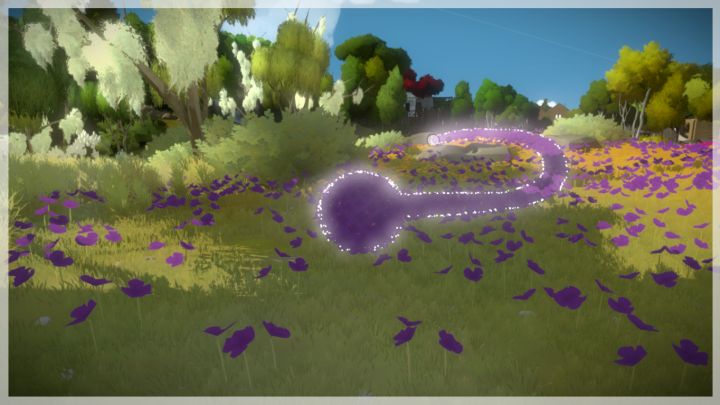

Your first act is to draw a line through a square on a door to open it, and once you’ve walked through into the island you’ll come across hundreds more grids to be marked in much the same way. Your only way to interact with the island, to open doors or create paths or otherwise make things happen, is to draw lines, thereby solving puzzles and occasionally operating switches. You’re the only one here, but your influence on the world is limited: you can’t push, pull, pick up, or go anywhere you’re not supposed to. Though water flows and plants sway, the environment feels still and controlled, and it can feel eerie. There’s no music and no animals – only diegetic sounds of waterfalls, machinery, and the sound of your own footsteps. Propped in permanent scenes from different time periods – some have swords, some laptops – these figures make the island feel like a gallery: you get to interpret the story and no one will tell you whether you’re right or wrong. Besides the natural beauty of rivers and hills and flowers and trees, perhaps the most impressive work is in the buildings designed in collaboration with real architects, the mechanical structures that creak and clank and thud, and the sculptures. A more obvious expense is the island itself, which is vibrant and lusciously detailed.


 0 kommentar(er)
0 kommentar(er)
